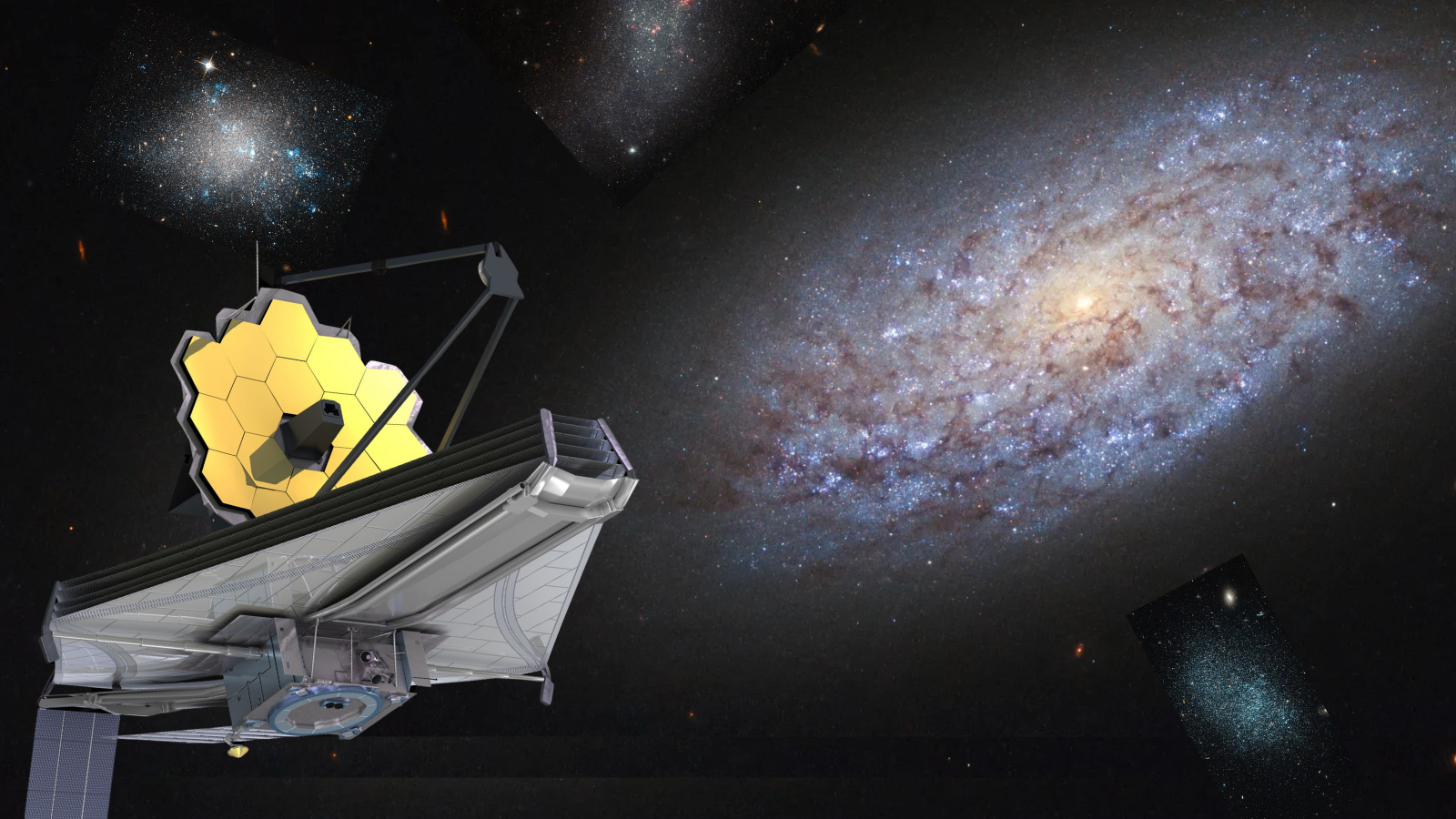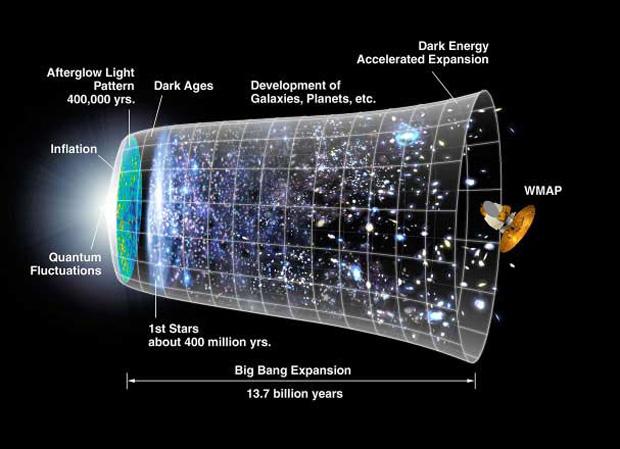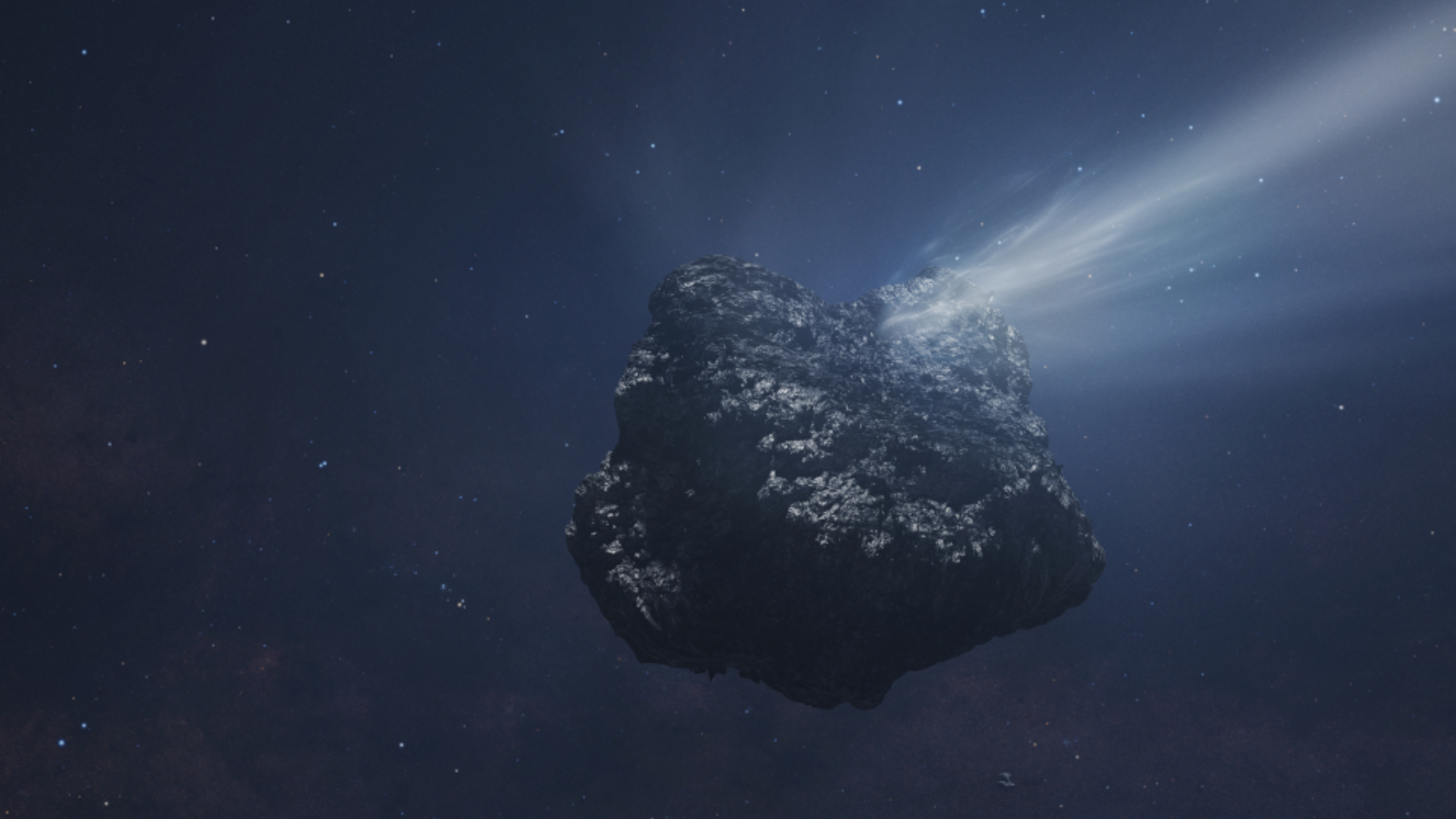James Webb Space Telescope finds dwarf galaxies packed enough punch to reshape the entire early universe
"The main surprise is that these small faint galaxies had so much power, their cumulative radiation could transform the entire universe."

Astronomers have used the James Webb Space Telescope (JWST) and an effect predicted by Albert Einstein over 100 years ago to discover that small galaxies in the early cosmos packed a massive punch, shaping the entire universe when it was less than 1 billion years old.
The international team found the galaxies, which resemble dwarf galaxies that exist today, played a vital role during a crucial stage of cosmic evolution that occurred between 500 and 900 million years after the Big Bang. These small galaxies also vastly outnumbered larger galaxies in the infant universe, the scientists say, adding that it's likely the realms supplied most of the energy needed for a process called cosmic reionization. Cosmic reionization was critical to the growth and progression of the universe.
"We're really talking about the global transformation of the entire universe," Hakim Atek, research lead author and an astronomer at the Institut d'Astrophysique de Paris, told Space.com. "The main surprise is that these small, faint galaxies had so much power, their cumulative radiation could transform the entire universe."
Small driving forces behind major changes
Prior to around 380 million years after the Big Bang happened, during a period called the epoch of recombination, the now 13.8 billion-year-old universe had been opaque and dark. This was because, in its dense and ultra-hot state, free electrons endlessly bounced around particles of light, called photons.
Later, during the epoch of recombination, however, the universe had expanded and cooled enough to allow electrons to bond with protons and create the first atoms of hydrogen, the lightest and simplest element in the cosmos. This disappearance of free electrons meant photons were suddenly free to travel, and as a result, the "dark age" of the universe ended. The cosmos suddenly became transparent to light. This "first light" can seen today in the form of a cosmic fossil that uniformly fills the universe called the "cosmic microwave background" or "CMB."
Because electrons and protons have equal but opposite electric charges, these first atoms were electrically neutral, but they would soon undergo yet another transformation.
Breaking space news, the latest updates on rocket launches, skywatching events and more!
After 400 million years, the first stars and galaxies formed — then, during the era of reionization, neutral hydrogen, the predominant element in the universe, was transformed into charged particles. These particles are called ions. Ionization is caused by electrons absorbing photons and increasing their energy, breaking free from atoms. Until now, scientists weren't sure where this ionizing radiation came from.

Suspects for the radiation source behind reionization had included supermassive black holes feeding on gas from accretion disks surrounding them — causing these regions to eject high-energy radiation — large galaxies with masses in excess of 1 billion suns, and smaller galaxies with masses less than this.
"We've been debating this issue for decades, actually, whether it's massive black holes or massive galaxies. There are even exotic explanations, like dark matter annihilation that creates ionizing radiation," Atek said, "One of the best candidates was galaxies, and now we've shown that the contribution of small galaxies is huge.
"We didn't think small galaxies would be so efficient at producing ionizing radiation. It's four times higher than what we expected, even for normal-sized galaxies."
Identifying smaller dwarf galaxies as main sources of this ionizing radiation was a challenge for a long time, because of how faint they are.
"It was hard to get this kind of information and these observations, but the JWST has spectroscopic capabilities in the infrared. In fact, one of the reasons we built the JWST is to understand what happened during the epoch of reionization," Arek said.
Even with the impressive infrared observing power of the JWST, spotting these dwarf galaxies wouldn't have been possible without the help of Albert Einstein — more specifically, without the help of his 1915 theory of general relativity, and an effect on light it predicts.
A helping hand from Albert Einstein
General relativity suggests all objects of mass warp the very fabric of space and time, which are, in truth, united as a single entity called "spacetime." Our perception of gravity, the theory says, arises as a result of that curvature. The greater the mass of an object, the more "extreme" the curvature of spacetime is. Thus, the stronger its gravitational effects are.
Not only does this curvature tell planets how to move in orbits around stars and, in turn, tell those stellar bodies how to orbit the supermassive black holes at the centers of their home galaxies, but it also changes paths of light coming from the stars.
Light from a background source can take different paths around a foreground object as it travels toward Earth, and the closer that path is to an object of great mass, the more it gets "bent." Thus, light from the same object can arrive to Earth at different times as a result of the foreground, or "lensing," object.

This lensing can shift the location of the background object in the sky, or it can cause the background object to appear in multiple places in the same image of the sky. Other times, light from the background object is amplified, and thus that object is magnified in the sky.
This effect is known as "gravitational lensing," and the JWST has been using it to great effect to observe ancient galaxies near the dawn of time, which it would otherwise have had no chance of seeing.
To observe the newly studied distant and early dwarf galaxies, and analyze the light they emit, the JWST used a galaxy cluster called Abell 2744 as a gravitational lens. "Even for the JWST, these small galaxies are very faint, so we needed to add gravitational lensing to amplify the flux of from them," Atek said.
With the mystery of reionization potentially solved, the team now aims to extend this study to a larger scale with another JWST project called GLIMPSE. The researchers will first try to confirm that the particular location studied in this research is representative of the average distribution of galaxies in the universe.
Then, beyond studying the reionization process, Atek and colleagues will aim to better understand the formation of the very first galaxies, which, over the course of 12 billion years, grew into present-day galaxies.
"So far, we've been really studying mostly bright, massive galaxies, but they are not very typical in the early universe," Atek concluded. "So if we want to understand the formation of the first galaxies, we really need to understand the formation of tiny, low-mass galaxies. And this is what we will be trying to do with this upcoming program."
The team's research was published on Wednesday (Feb. 28) in the journal Nature.
Join our Space Forums to keep talking space on the latest missions, night sky and more! And if you have a news tip, correction or comment, let us know at: community@space.com.

Robert Lea is a science journalist in the U.K. whose articles have been published in Physics World, New Scientist, Astronomy Magazine, All About Space, Newsweek and ZME Science. He also writes about science communication for Elsevier and the European Journal of Physics. Rob holds a bachelor of science degree in physics and astronomy from the U.K.’s Open University. Follow him on Twitter @sciencef1rst.
-
Atlan0001 Encompassing superposition superposed (superposing) collapsed cosmological constant of (a working!) Horizon: Superimposed (superimposing) Horizon upon possible infinities of horizon universes.Reply
-------------------------
"Horn of Plenty" / "Fountain of Youth"!
"An infinite density is a great Abyss (a supreme hollow)!" -- Me.
"Horn of Plenty" / "Fountain of Youth"! (Just in case you missed It.)--------------------------
"Slay enough dragons, you become a dragon; Stare into the Abyss, the Abyss will stare back into you." -- Nietzsche.
("Yesterday upon the stair, I met a man who wasn't there....") -
bibhutibhusanpatel@gmail. No basic or foundation role of Einstein's GR is present in the rotation of stars around the supermassive black hole or Star Dynamics.Yet,GR has a good scope to be imple-Reply
mented in assembĺy with Thermodynamic-Quantum Mechanics Relationship.
